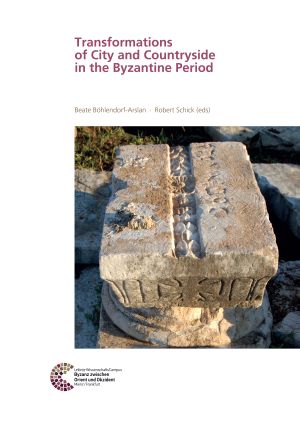Böhlendorf-Arslan, Beate
Transformations of City and Countryside in the Byzantine Period
The concept of »transformation« or simply »reshaping« contains the elements of what remains, the conservative, the kernel of what continues, as well as the elements of what changes, the innovative. In the framework of this publication of articles from a conference in 2016 on »Transformations of City and Countryside in the Byzantine Period«, we draw attention to this dichotomy and investigate the social dynamics behind changes in urban and rural life in the Byzantine period that can be detected by archaeology, history and art history.
The Byzantine Empire is an ideal subject for studying how social transformation proceeds, what triggers transformation, what factors underlie it and what the processes involved are. Who were the agents of transformation and how did they and their environment change? How flexible were the state or its citizens in handling external and internal pressures of innovation? In what manner and to what extent were the Byzantines able to preserve their identity and the internal cohesion of their empire in the course of these processes of adaptation?
Veränderungen von Stadtbild und urbaner Lebenswelt in spätantiker und frühbyzantinischer Zeit: Assos im Spiegel städtischer Zentren Westkleinasiens
The transformation and restructuring of the ancient city in Asia Minor in the Late Antique and Early Byzantine periods has become a central topic of archaeological and historical research in recent decades. The contributions to this volume present an extremely differentiated picture of the development of cities and their surrounding areas during this period. An ideal starting point for this is the city of Assos on the southern coast of the Troad, where the transformation of the ancient city from the 4th to the 8th century has been the focus of research since 2013. The picture gained there is placed in a broader context in the present volume by contributions on Pergamon, Sardis, Ephesos, Didyma and Sagalassos, which shed light on the development process of the Late Antique and Early Byzantine cities of Western Asia Minor in very different ways from various aspects.
Schiffe und ihr Kontext: Darstellungen, Modelle, Bestandteile – von der Bronzezeit bis zum Ende des Byzantinischen Reiches
Seafaring was extraordinary important in Antiquity and the Middle Ages for the economy and the wielding of power. It also provided contact between distant places. Ships were on the one hand decorated and ornamented and on the other hand they were frequently objects of depictions which could range from sketchy graffiti to three-dimensional reproductions. The contexts of the depictions encompass different areas, such as public and private representation as well as religion.
This Volume assembles 18 articles that have been presented on the occasion of an international workshop in 2013. Different groups of material ranging from the period of Bronze Age until the end of the Byzantine Empire were presented as well as the development of ship-building and navigation. The depictions of ships which have investigated scanty until now were the main target of the workshop.










